Foundation for Rural & Regional Renewal (FRRR)
In this quarter’s update for FRRR’s donor partners, read about:
- Official opening of First Steps Count in Taree, NSW
- A new Giving option
- Bushfire Recovery, three summers on
- Insights from the Bush
- Our Progress – Q2 FY 2022/23
- Partnering opportunities in youth and education
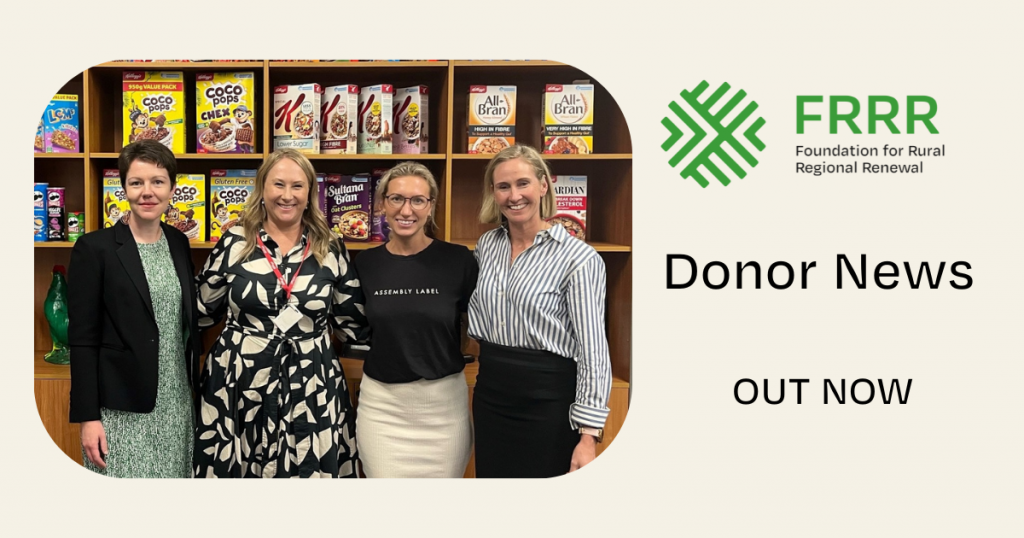
In this quarter’s update for FRRR’s donor partners, read about:
- Connecting with Communities
- Progress Report
- Insights from the bush
- Donor spotlight: Nutrien Ag Solutions
- Community partner spotlight: Housing Matters Action Group Inc (HMAG)

In this quarter’s update for FRRR’s donor partners, read about:
- Tiwi Enterprises: strengthening their community in the Northern Territory
- Progress Report
- Insights from the bush
- Donor spotlight: Raine & Horne Foundation
- Support Victorian communities to be Disaster Resilient: Future Ready

In this quarter’s update for FRRR’s donor partners, read about:
- Ngketya Nwernaka Ilkerta Mparetyeka: an innovative grassroots language revival program in Central Australia
- Progress Report
- Insights from the bush
- Donor spotlight: The Macdoch Foundation
- Community Partner Spotlight: Australian Centre for Rural Entrepreneurship (ACRE)
- Partnering opportunities: Private Ancillary Funds
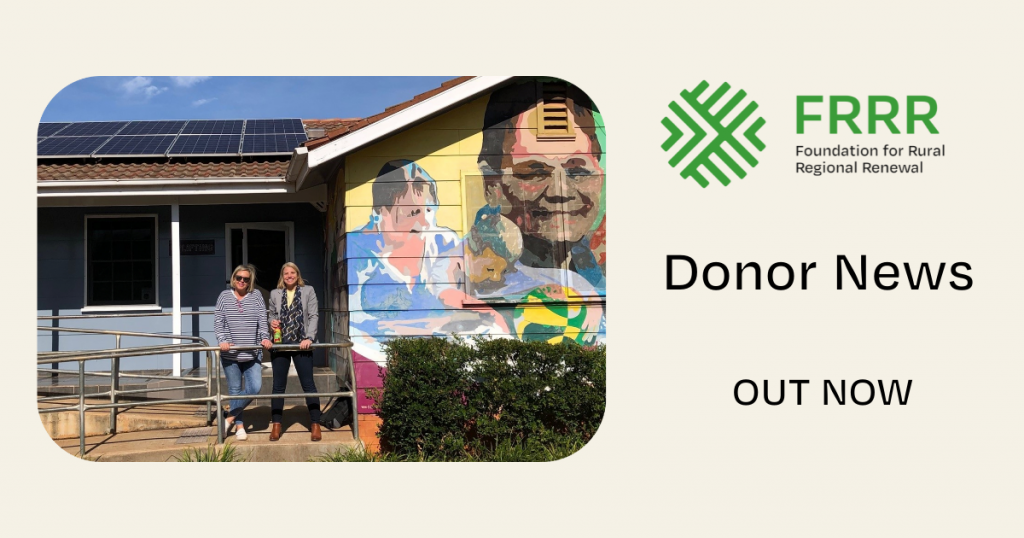
Local community groups and not-for profit organisations in remote, rural and regional NSW are being offered grants to boost preparedness for future pandemics and other disasters.
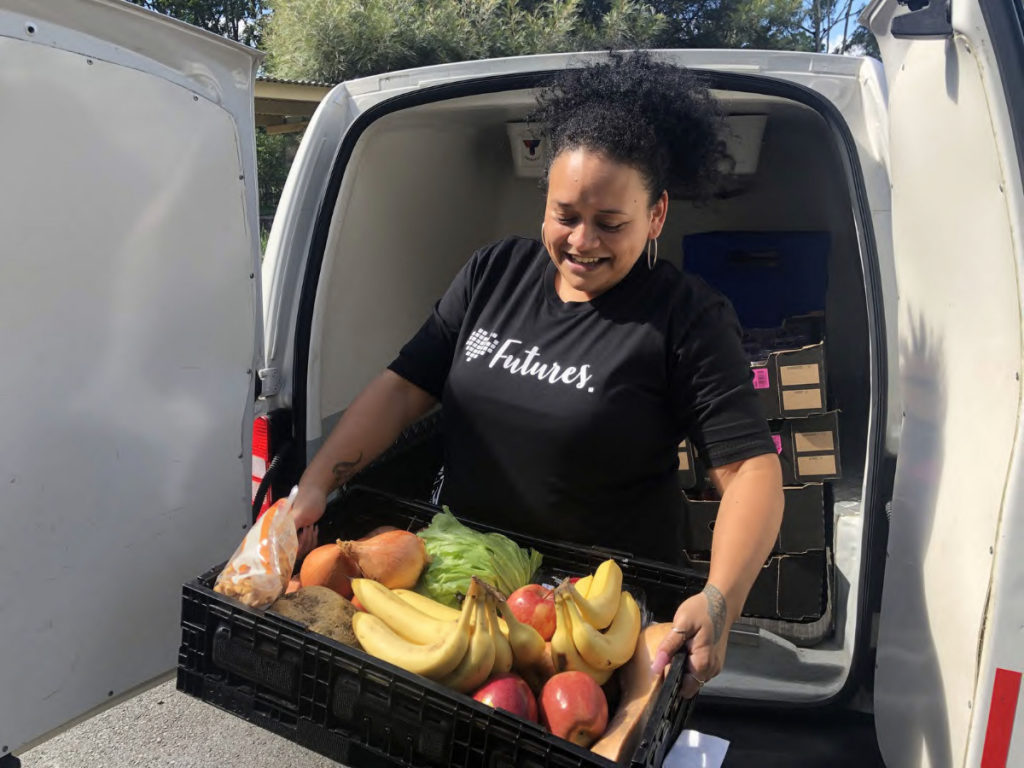
Minister for Emergency Services and Resilience and Minister for Flood Recovery Steph Cooke said the program, funded by the NSW Government, was established to strengthen groups that have played a critical role in supporting communities throughout COVID-19.
“These grants are being offered through the Resilience NSW COVID Regional Community Support (CRCS) program and are administered by the Foundation for Rural & Regional Renewal (FRRR),” Ms Cooke said.
“Grants of up to $50,000 will be awarded toward regional capacity building initiatives such as those that attract and retain volunteers and staff, train to enhance governance skills, build digital capacity and create partnerships that foster stronger, more resilient communities.”
Natalie Egleton, CEO of FRRR, said that regional organisations in NSW have gone above and beyond for their communities during the pandemic, especially when for many it was also on top of floods, fires and the mouse plague.
“Remote, rural and regional community groups and not-for-profits really stepped up in what were extraordinary times. We take our hats off to them for how they have persevered, especially in the face of so many challenges.
“The findings of our Heartbeat of Rural Australia study last year highlighted that many community groups were really fatigued and able to operate at only a fraction of their usual capacity. They were struggling to find volunteers and staff, and while many groups turned online, the digital divide that exists between urban areas and regional areas became really apparent, as did several other capacity constraints.
“This program has been designed in partnership with the NSW Government to enable community groups to address these issues and fill the gaps that became more evident during the pandemic. We know that every community is different, so it’s deliberately flexible and will support community groups to be better prepared in future,” Ms Egleton said.
To find out what can be funded through the capacity building stream, and to apply, visit https://frrr.org.au/ResNSW-Covid-Support.
Applications close 5pm AEST on Friday 29 April 2022.
In this quarter’s update for FRRR’s donor partners, read about:
- Flood recovery – how you can help
- The long and short of bushfire recovery – FRRR’s approach to recovery following the Black Summer bushfires
- Case study: Recovery in action in mighty Mallacoota
- Insights from the bush
- Donor spotlight: The Bertalli Family Foundation
- Progress Report
- Partnering opportunities: Victorian expansion of disaster resilience
- Community partner spotlight: The Next Economy
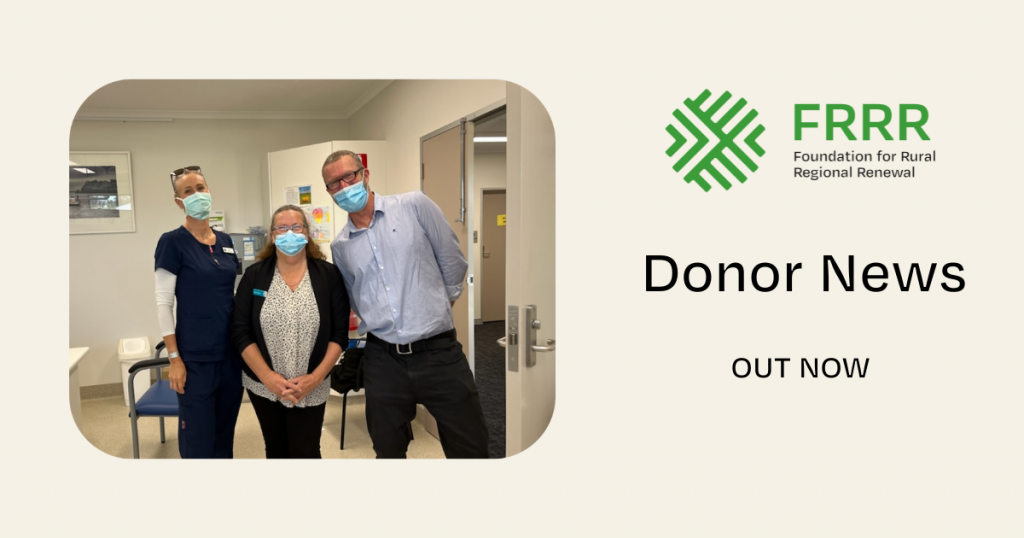
Three regional communities to take part in multi-year initiative
FRRR’s Disaster Resilient: Future Ready (DR:FR) Victorian program continues to build steam, with three regional communities selected to partner with the Foundation to strengthen the resilience and preparedness of their regions.
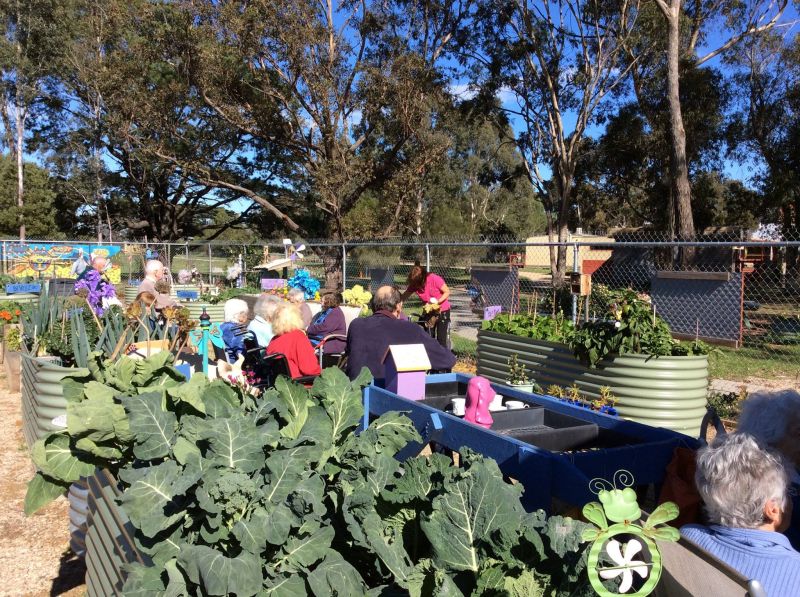
Korumburra, Myrtleford and Whittlesea township and surrounds will receive support as part of a multi-year, community-led program that is supported by a number of philanthropic organisations.
Nina O’Brien, FRRR’s Disaster Resilience and Recovery Lead, said that the DR:FR initiative works to better prepare communities to address the impacts of climate change, natural disasters and broader disruptions that affect the sustainability, vitality and resilience of remote, rural and regional communities across Australia.
“This is a place-based initiative, whereby FRRR works at a hyper-local level with grassroots organisations and community representatives who are interested in collaborating and leading initiatives to increase community preparedness and strengthen resilience capacity.
“The model is designed to help communities identify and then enact solutions that are held in local knowledge and the intersections of people and place. It creates space, facilitates processes, builds relationships and provides resources for community-generated resilience conversations and initiatives to be held at a pace and style that is appropriate for each local community,” Ms O’Brien explained.
Community driven
Late last year community representatives were invited to submit an Expression of Interest (EOI) to become partner communities. Over the past eight months, FRRR’s DR:FR Program coordinator has engaged with representatives from the shortlisted communities, listening and learning about what is unique and important to each place and exploring their readiness, willingness, and capacity to participate in this intensive process.
This process helped FRRR understand their shared aspirations, what they believe is important about their community and demonstrated the commitment and interest in participating in the program.
“The emphasis is on the communities being actively engaged and involved in the process. Our aim is to empower local people to build and adapt the strengths, tools and resources that already exist in each community to further strengthen the resilience and preparedness of each place. It will be community-led and tailored to each community, with support and resources provided to allow them to identify, create and sustain their own resilience-building approaches,” Ms O’Brien said.
The program will start in the next month, beginning with a series of activities to bring interested community members together and start engaging with the broader community around aspirations for the future. In addition to the facilitation support from FRRR, the communities will have access to funding for community activities that support community engagement activities and a seed funding pool to engage a local community connector and activate priority actions identified through the DR:FR journey.
More communities waiting in the wings
“While three communities have been selected, there is strong interest from other places to participate in this program,” Ms O’Brien said.
“We have several communities keen and ready to jump on board and we would love to work with them. Our hope is to expand this program to at least one other Victorian community, and we also have groups in other states wanting to be involved.
“But this requires further funding, so we and our partners can work alongside and support local leaders to create meaningful and lasting change that means they can endure, adapt and evolve from disruptions and disasters more quickly, positively and strongly.
“We are grateful to our current partners for making the Victorian DR:FR program possible. We’d love to hear from others with the capacity to partner with us to expand the program,” Ms O’Brien said.
The DR:FR initiative is kindly supported by the following partners: Sidney Myer Fund, Lord Mayor’s Charitable Foundation, Maple-Brown Family Foundation, Simon Kucher and Partners, Ronald Geoffrey Arnott Foundation, H & L Hecht Trust, Suncorp, Pinnacle Charitable Foundation and the Doc Ross Family Foundation.
For more information about the program, visit https://frrr.org.au/drfr-victoria/.
In this quarter’s update for FRRR’s donor partners, read about:
- Heads up on the findings of the Heartbeat of Rural Australia study
- BE INSPIRED: Thallon ‘back from the brink’
- Donor Spotlight: Pinnacle Charitable Foundation
- Insights from the bush
- Our progress, with your support
- Partnering Opportunity – Supporting volunteers through SRC
- Grants in Action: Bermagui’s collective approach to preparedness
- Community Partner Spotlight: Housing Matters Action Group
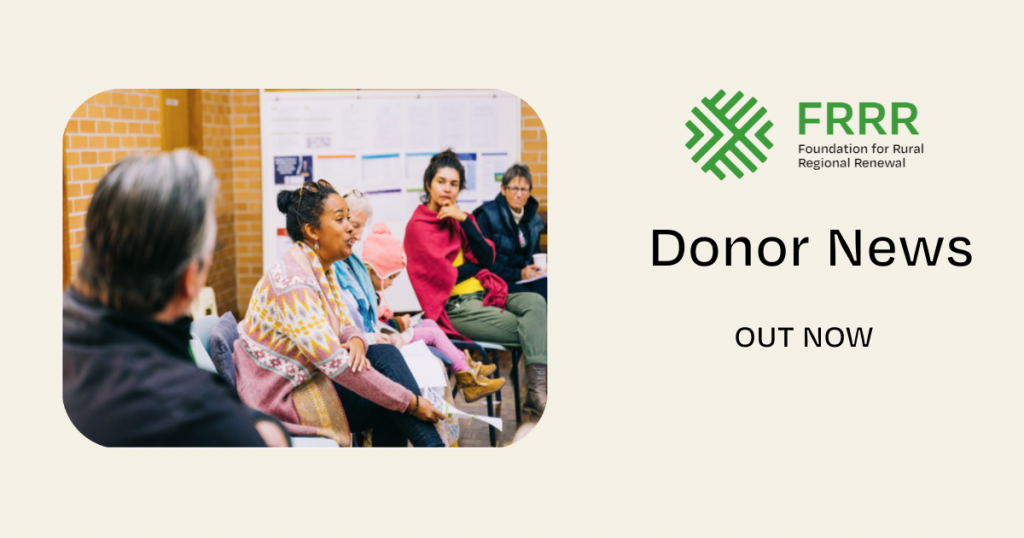
By Nina O’Brien, Disaster Resilience and Recovery Lead
In recent weeks, with funding being awarded through various FRRR programs, we have started to see concepts lift from the page and move into activated ideas. It also comes at a time when intersecting international conversations of climate urgency relating to COP 26 and the IPCC Report feature heavily in our daily media news feeds. So, it is timely to pause, and reflect on the tapestry of drought preparedness and resilience-building activity being undertaken across Australia, and to share some observations.
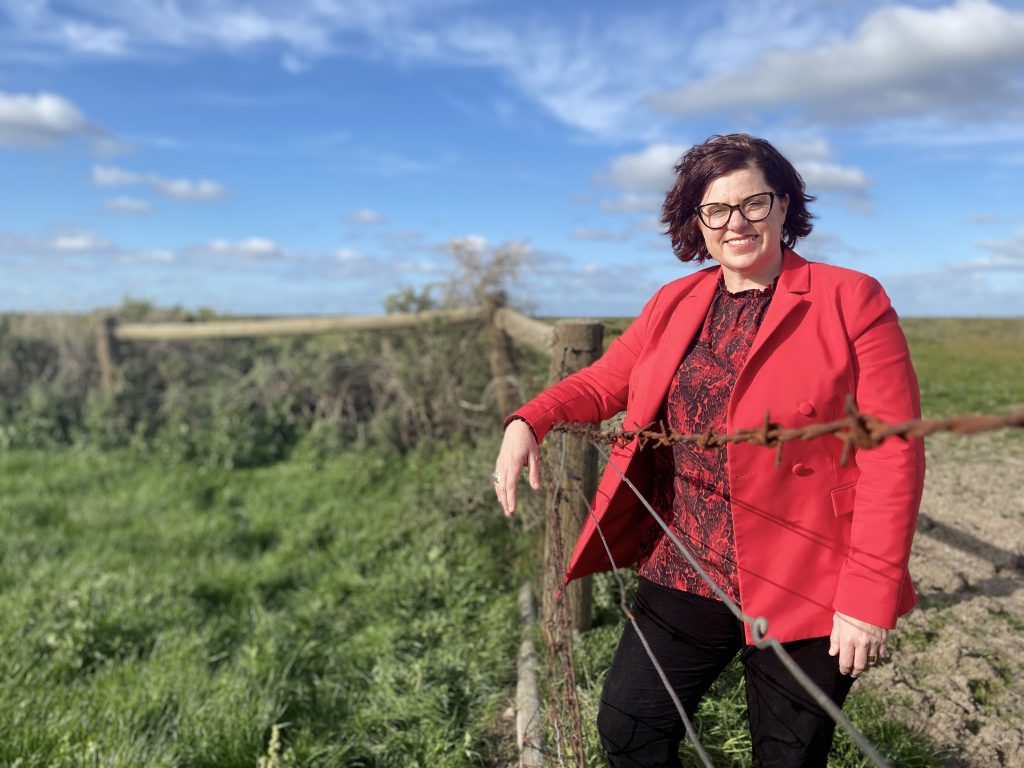
While the future climate challenges are as diverse as the landscapes where they are located; the people and communities of remote, rural and regional Australia are actively engaging in local solutions, decision-making and networking as a means of gaining and sharing the skills and knowledge needed to prepare their community and region for an increasingly drying climate, and sometimes challenge long-held attitudes.
On the national stage, the Rural and Regional Affairs and Transport References Senate Committee recently published its finding into its enquiry on the Federal Government’s response to the drought, and the adequacy and appropriateness of policies and measures to support farmers, regional communities and the Australian economy. In addition, the Australian Government’s Future Drought Fund initiatives are starting to take flight across multiple streams of investment that aim to build an economic, environmental, and socially resilient nation capable of enduring the impact of climate change. At FRRR, part of our challenge is synthesising the international, national, and state contexts with a hyper-local application of understanding and ideas to bring value to local people and places, as we work alongside them to imagine a vibrant future.
It’s our belief that remote, rural, and regional communities have the knowledge to best respond to the impacts of drought, climate change and other natural disasters. So, it has been incredibly heartening to see the diversity of response from communities in building their local networks, capacity, skills, and knowledge to respond to future drought and disaster events.
The first-round of recipients of the Australian Government Future Drought Fund’s Networks to Build Drought Resilience program have elicited a range of interesting patterns across the continent. Among them, and reflective of the increasing part that women are playing in key decision-making roles in rural and regional communities, concepts to build drought resilience locally-devised by women have emerged as a strong theme across multiple states.
A case in point. Although the mean rainfall has been relatively stable across the Eyre Peninsula in the last 30 years, the average days over 38 degrees have increased, and rainfall has decreased in autumn and in the late winter and early spring months, compared to the preceding 30 year period. Against this backdrop, Women Together Learning (WoTL), from Rudall in South Australia, are actively working to building their ambassador network to support women in agriculture through five workshops focusing on future drought, climate projections and the impact on agricultural practices and rural communities. The project involves building the capacity of the WoTL Ambassadors to participate in planning, professional development, and networking.
The project will bring women together, who ordinarily may connect, to form an ongoing future network to build skills, knowledge, and personal connections to be better informed about challenges that the changing climatic patterns presents. With a mean total of 300mm rain per year, planning ahead, and collective problem solving through strong networks will be critical to the region’s success.
On the other side of the country, in a completely different agricultural landscape and climate impact context, is the Northern Rivers Community Gateway Inc who are leading the Women on The Land – Get Ready Empower Yourself Preparedness Workshop Series in Casino, in New South Wales.
This project will deliver five workshops to improve the confidence and reduce social isolation of rural and regional women, while also providing planning and coping tools for the participants to share with their broader networks. Focusing on decision making, preparedness and land management, the workshops will provide a forum to build positive mental health of rural and regional women, while also providing access to service providers and the opportunity to build networks for ongoing cohesion and support.
In another example, the Liebe Group, an active grass-roots grower group from the Dalwallinu region of Western Australia, is also playing an active role in supporting women in drought resilience through their Women In Ag Networking and Diversification (WAND) Program: Strengthening Social Connection and Farm Business Resilience. Importantly, this project will host onsite field visits and an agricultural show day to provide participants with future planning knowledge for below-average seasons and increased business acumen to adapt to the negative effects of drought. Through the project, the local women in agriculture involved in the projects will build capacity and resilience, as well as regional networks to respond to the impacts of drought, both socially and on their farm businesses.
The strength of these projects lies in the hyper-local but interconnected structure of these projects, as affirmed by the recent research commissioned by FRRR that indicates:
‘Resilience is not something that individuals or communities can achieve on their own. It is achieved through the combined and intersecting structures, processes, formal and informal networks and supports in communities working together. What we see as individual or community resilience is part of and supported by a collective effort by agencies, organisations, community groups, business and community members.’
We look forward to continuing to support groups like these, as they identify the most appropriate responses to these ongoing challenges, and equally take advantage of the opportunities that will no doubt emerge, as they strive for a vibrant and sustainable communities.
A call for more investment in local community groups, so they are better equipped to play a key role in building community resilience ahead of climate, natural disasters and other disruptions, is among the series of recommendations to come out of a three-year research project.
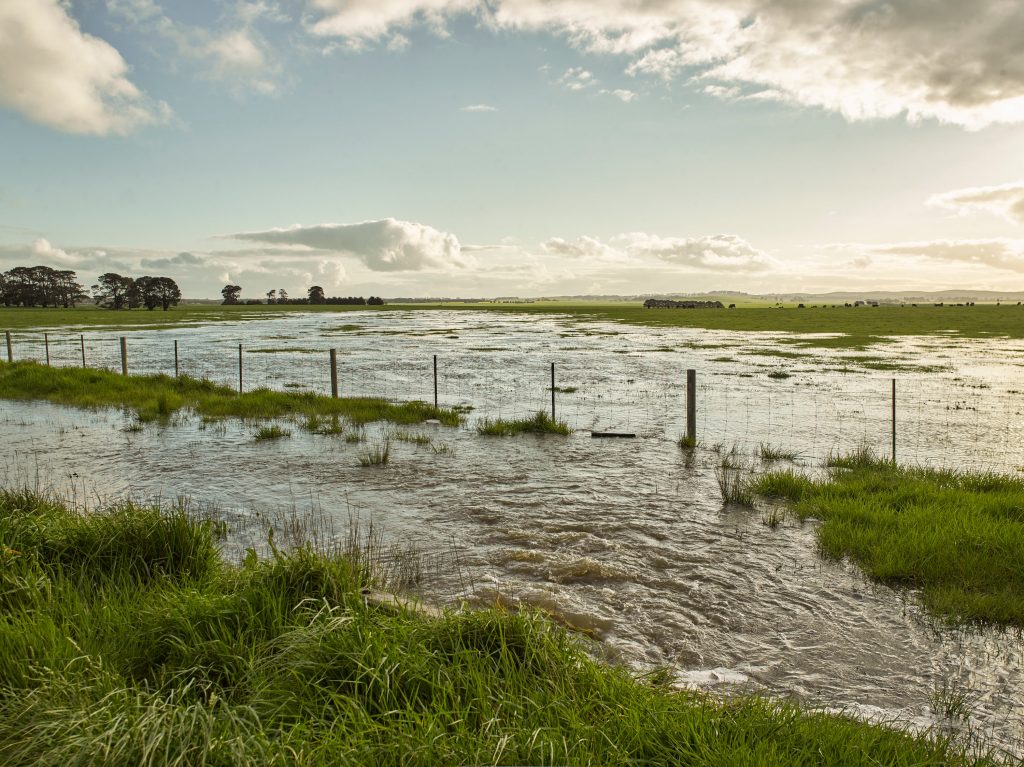
Led by the Foundation for Rural & Regional Renewal (FRRR) in partnership with Resilience NSW and researchers from the University of Sydney, the ‘Get Ready Disaster Resilient: Future Ready (DR:FR) pilots project’ worked with three diverse NSW communities to explore how best to ensure that rural communities are more disaster resilient and future ready.
The ‘Get Ready DR:FR pilots project’ was a structured program that brought groups in each community together to share knowledge and encourage collaboration to identify ways to increase disaster resilience. The program supported co-created initiatives and actions identified by local residents with funding and other support.
The action research component of the project was designed to investigate, understand and measure activities, processes and structures that enable, or hinder, communities in disaster resilience building. Particular attention was focused on measuring how community energy and momentum was sustained or blocked.
Natalie Egleton, FRRR’s CEO, said that the Foundation initiated the project back in 2017, in light of the increasing frequency and severity of natural disasters. An alignment between FRRR’s DR:FR initiative and the Resilience NSW’s Get Ready program enabled the project to be piloted and researched in three NSW communities.
“Every year, we see more and more disasters, which places enormous pressure on Australia’s social, economic, environmental, and policy systems. We need approaches that strengthen social capital and create room for innovation and ground-up solutions that communities can adopt and adapt to better prepare and respond to these events, especially in remote, rural and regional areas,” Ms Egleton said.
“That’s why we developed the DR:FR initiative. It creates space, facilitates processes, builds relationships and provides resources for community-generated resilience conversations and initiatives to be held at a pace and style that is appropriate for each local community,” Ms Egleton explained.
A key finding of the research was that for disaster resilience to be impactful and meaningful, affected communities need to be actively engaged and involved in the process.
“While the core principles for building disaster resilience are consistent, the research confirmed that one-size-fits-all frameworks and models are not effective. Resilience-building must be community-led and tailored to each community, and communities must have the support and resources to allow them to create their own resilience-building approaches.”
“The research clearly demonstrated that when community members worked on projects and activities co-designed by them, adaptive local resilience building was evident. This is an important insight and consideration for agencies and organisations that are designing and implementing resilience building programs with a shared responsibility philosophy of disaster preparedness.”
While the study found that the approaches to disaster resilience and the actions in each community were different, there were seven key factors that are critically important in community-led resilience: communication, networks, self-organising systems, decision-making, information, resources, tools and support and inclusion.
Some other important findings included:
- Social capital plays a critical role in disaster preparedness, not just response and recovery – and needs to be consistently invested in. Community knowledge, skills, time, commitment, capacity and relationships fundamentally underpin disaster resilience.
- Shared responsibility – and actively engaging communities – are critical to successfully building community resilience. Where there was shared dialogue, shared decision-making and increased and shared support for community-led resilience building, communities were significantly more engaged and prepared for disasters.
- Communities need ongoing support to build and maintain momentum for sustained community-led resilience building and they need to be resourced and included as key local players at all phases of the emergency management cycle. Relying on good will and volunteer time alone will not provide adequate capacity to maintain efforts and participation between and during disasters.
- There is a need to invest for the long-term in local capacity and systems, outside of the cycle of relief and emergency response, so that there is sustainability beyond the life of a program or project.
- Resilience is not something that individuals or communities can achieve on their own. It requires combined and intersecting structures, processes, formal and informal networks and supports in communities working together.
The researchers made nine recommendations:
- Community led approaches must move to the centre of resilience building efforts.
- Communities should be regarded as equal contributors in disaster resilience work.
- Shared responsibility must translate into increased and shared support for sustained community-led resilience building.
- Disaster resilience building needs to reflect the experiences of communities and recognise that preparedness, response and recovery are fluid, and sometimes simultaneous.
- The times between disasters is an ideal opportunity to engage communities in complex discussions and hear their ideas.
- Communities should contribute to and contextualise disaster information (outside of warnings and alerts) to local needs, building trust and ownership of information and communication.
- Community-led approaches are valuable, and must be matched with sustained cross-sector and cross-community investment, including recognising the value of community time, skill and effort.
- Resilience building programs and projects must be designed and implemented within a systems framework and acknowledge the complex array of relationships involved, and the time required.
- Further work should be undertaken in supporting practical links between local community organisations and self-organising networks and groups in supporting sustained resilience building in local communities.
You can read the Summary Research Report online at www.frrr.org.au/DRFR.
Meanwhile, FRRR has already leveraged the research insights, findings and recommendations from this research to iterate its methodology, approach, and activities for the next phase of the national expansion of the DR:FR initiative. The Foundation is currently working with a group of Victorian communities who wish to explore and work together in different ways to strengthen their resilience over the next two to three years, with the support of the DR:FR initiative.
FRRR acknowledges the support of the Joint State and Commonwealth Natural Disaster Resilience Program for the action research component of the pilot project. FRRR also appreciates the support of our donor partners in the rollout of the broader DR:FR initiative across Australia, including Sidney Myer Fund, Lord Mayor’s Charitable Foundation, Maple-Brown Family Foundation, Simon Kucher and Partners, Ronald Geoffrey Arnott Foundation and the Doc Ross Foundation for their support of the broader DR:FR initiative across Australia.

